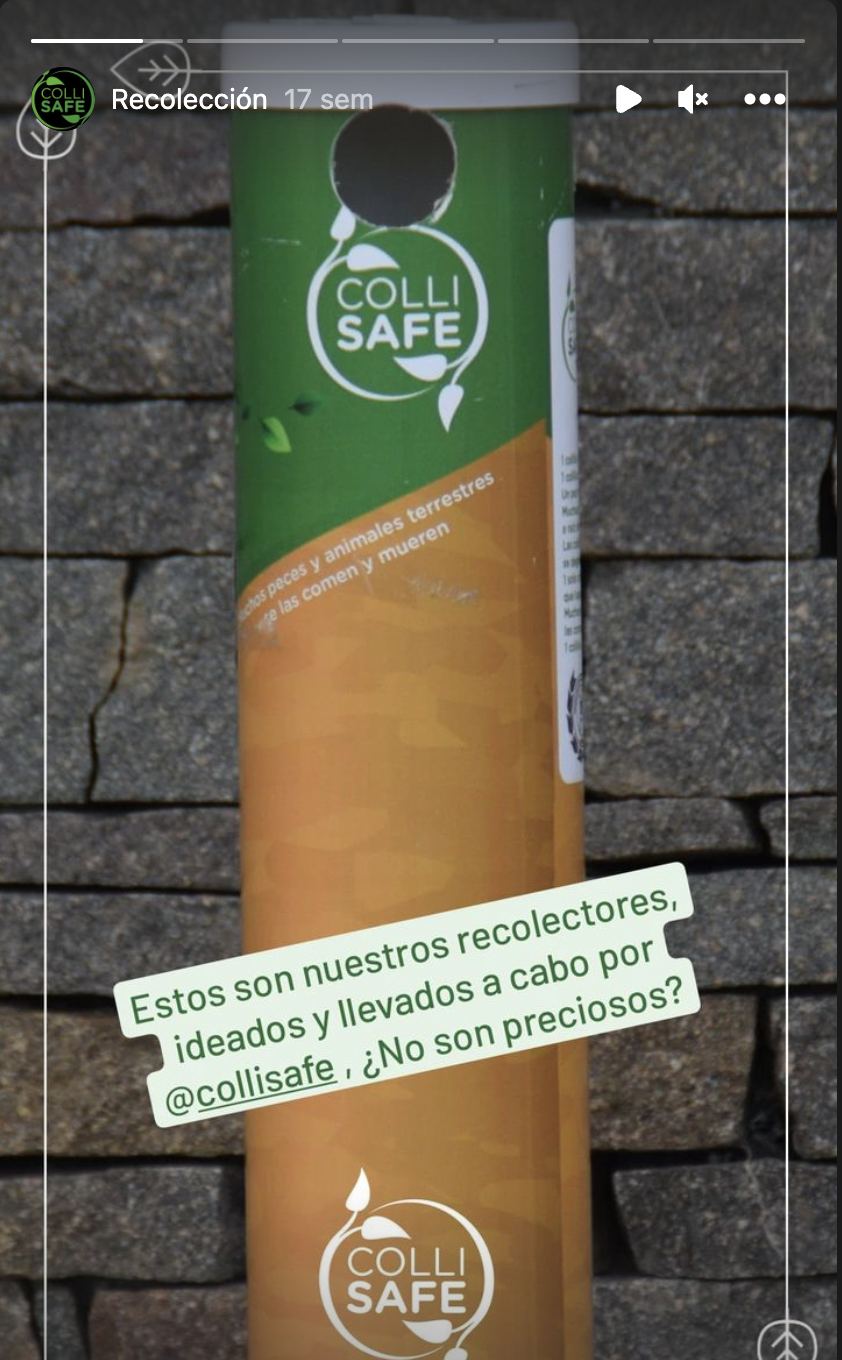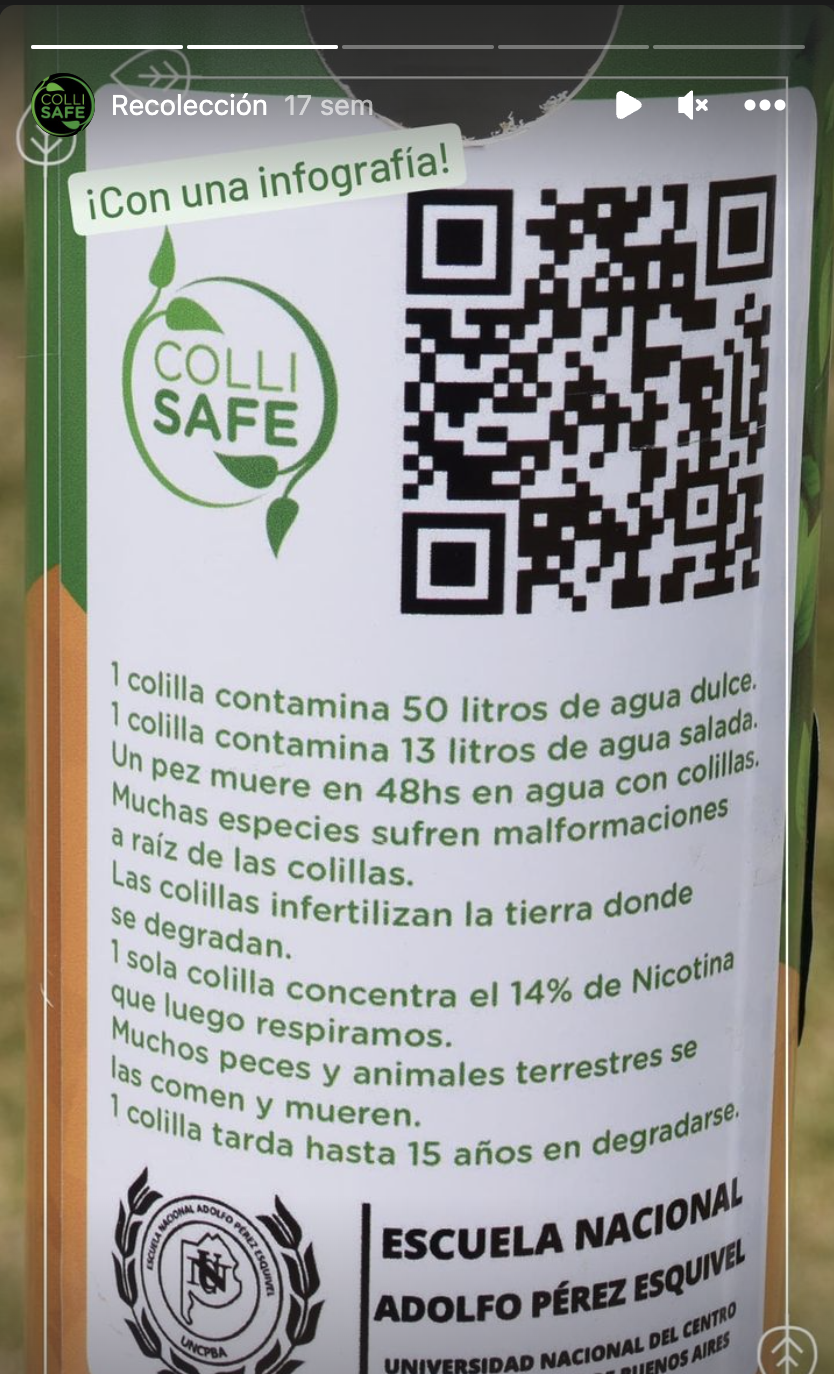Reusing cigarette butts, fully recovering and eliminating all chemicals and toxins from the cellulose used by fungi. This was the solution designed and achieved by a trio of young people, students in their final year of high school at the Adolfo Pérez Esquivel National School, in Olavarría, Argentina.
The proposal arose in the Entrepreneurship course taught by Professor Agustín Pascua. Proposing greater dynamism for the classroom, which is structured to be a space for pedagogical innovation and hands-on learning, the teacher found in Samsung Solve for Tomorrow a way to support teenagers in the implementation of projects of interest to youth. “It is not a contest. It is a program that invites teachers to change their pedagogical perspective,” he says.
As an initial strategy, the professor presented the Project Journey made available by the program to his class of 20 students, inviting them to organize themselves into groups based on skills and abilities. He then spent two classes working with the whole group on the Sustainable Development Goals, helping them to list possible social challenges they would like to work on. The most varied problems emerged from the brainstorming rounds, which impacted both the school and the community. “Among them, we identified that the lawn around the school, which is huge and beautiful, was brown. Brown from cigarette butts, thrown and scattered all over the corner”, narrates the educator, remembering that Argentina is a country where there is a lot of cigarette consumption.
The trio formed by Ander Arguiñena, Daniel Góngora Banegas and Luna Morena Ruiz Díaz decided to take on the issue, but still had no idea how to solve the problem. To guide them, following the pedagogical proposal of their discipline, the professor invited them to create a Lean Canvas, a methodology for developing business models, focused on three axes: public, problem and solution. As a challenge, they had to summarize the problem and the solution in 300 characters each, learning to respond objectively to what they would like to test. After extensive investigation, the youths understood that they would like to recycle or reuse cigarette butts in some way, acting directly on environmental depollution.
With the problem in hand, they began to look for a solution and, according to the teacher, this was, without a doubt, the most difficult process. “At first, we only found proposals that were very costly or that generated new environmental problems, with the use of chemicals that were harmful to the environment and human health”, he explains. It was then that the group found the doctoral thesis by Dr. Leopoldo Benítez González, defended at the Autonomous University of Mexico. “We found the dissertation, got in touch with him via LinkedIn, and he promptly answered us, explaining his research better”, celebrates the professor.
Then, as the school is integrated into the university, the next step was to seek the collaboration of local researchers. With the collaboration of Dr. Gaston Barreto, from the Department of Chemical Engineering at UNICEN and his team, the group started the first tests of decontamination of butts with the fungus Pleurotus ostreatus, popularly known as oyster mushroom. With the butts sealed in a container containing the fungus, in just 25 days in the dark, the toxic substances were degraded.
Guided by the laboratory staff, the students performed a set of initial tests, following the scientific method, including control samples. With the experiment reproduced and results confirmed, the group then started the prototype, which went beyond the experiment itself. The prototype consisted of three stages: collection, chemical process and finished product; thinking, from the beginning, on the scalability of the project.
Innovations
Using the methodological tool of the Ishikawa Diagram (fishbone), which helps to identify causes of problems, and carrying out a SWOT analysis (Strengths, Opportunities, Weaknesses, Threats), the group designed the multiple stages of the strategy. “With the tools, they materialized the project as a whole, identifying all the points in the production chain”, explains Agustín, noting that at this stage, the young people also developed the initiative’s brand, logo, and key messages.
For the collection, they created butt boxes made of PVC pipe, which were set up on the school and university campus. The largest, measuring 1.5m, with a storage capacity of 100,700 butts and the smallest, which were placed in the yards, with a capacity of 2,700. In them, the message of the project and the ColliSafe brand were indicated. “To encourage individual collection, we created the idea of ambassadors, who are nothing more than enthusiasts of the initiative who agree to receive butts stored by other people in their homes and get prizes in recycled material”, he explains.
The professor indicates that, in his discipline, the groups discussed gamification and guerrilla marketing strategies, experiencing the contents in a practical way in their projects. “The butt box was thought of as a giant cigarette, communicating the message visually. Another gamified strategy was a mobilization day with a team game in the school community to see who collected the most butts. ”, he explains.
As the final process of the prototype triad, there is the reuse of cellulose acetate and the fungus that consumed the toxic substances. Acetate, according to the group, can be sold at US$5 per kg and used in the manufacture of paper. “1000 kg of cellulose acetate is equivalent to 14 trees”, he adds. Furthermore, the roots of the fungus can be crushed and used as fertilizer.
Communicating ideas
With the prototype developed, tested, and systematized, the group needed to advance in its communication. As it is a multi-step process, with different types of impact (social, environmental, and economic), it was necessary to invest in structured and well-trained pitches. For this purpose, the team had the support of a video production company that exists at the Faculty of Social Sciences at the University. “They had a workshop on how to put together the script and the college team filmed it”, says Agustín, reiterating the importance of the partners who got involved with the idea.
To better communicate the message, the professor also worked with Neurolinguistic Programming (NLP) strategies, discussing with the youngsters strategies to make use of synesthetic stimuli in the construction of the message. Another strategy was non-verbal communication techniques (NVC), adapting gestures, postures, and vocal intonation. “It sounds crazy, but we worked it all out! And everything was done in an integrated way to the classroom”, comments the teacher. Although he had many meetings outside the classroom with the group, all the contents were worked on in a programmatic way.
“It is important to say that teaching this way is much more pleasurable, for them and for us, as teachers”, explains Agustín, arguing that the set of soft skills that students develop are a fundamental achievement in the teaching and learning process. “They will certainly be more active citizens, capable of listening to others, working in groups and believing in their potential”, he concludes.







